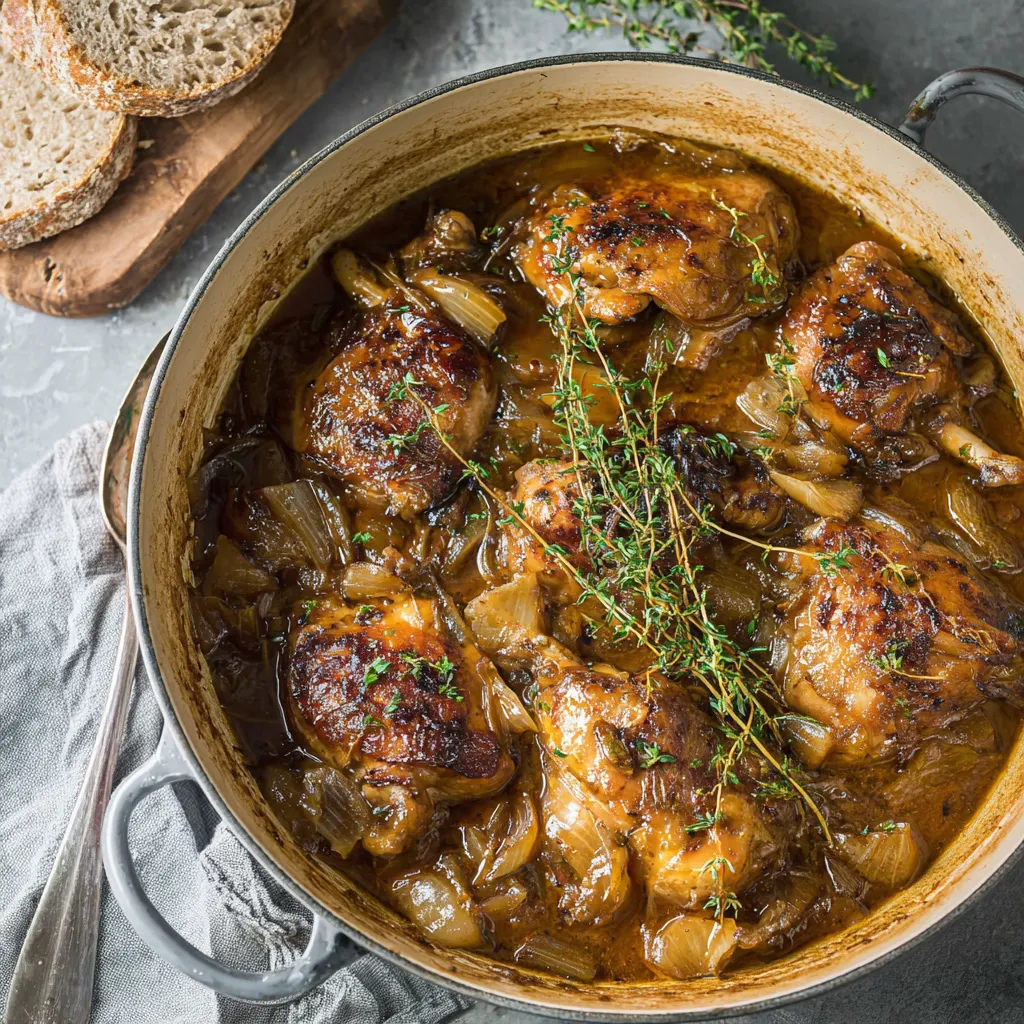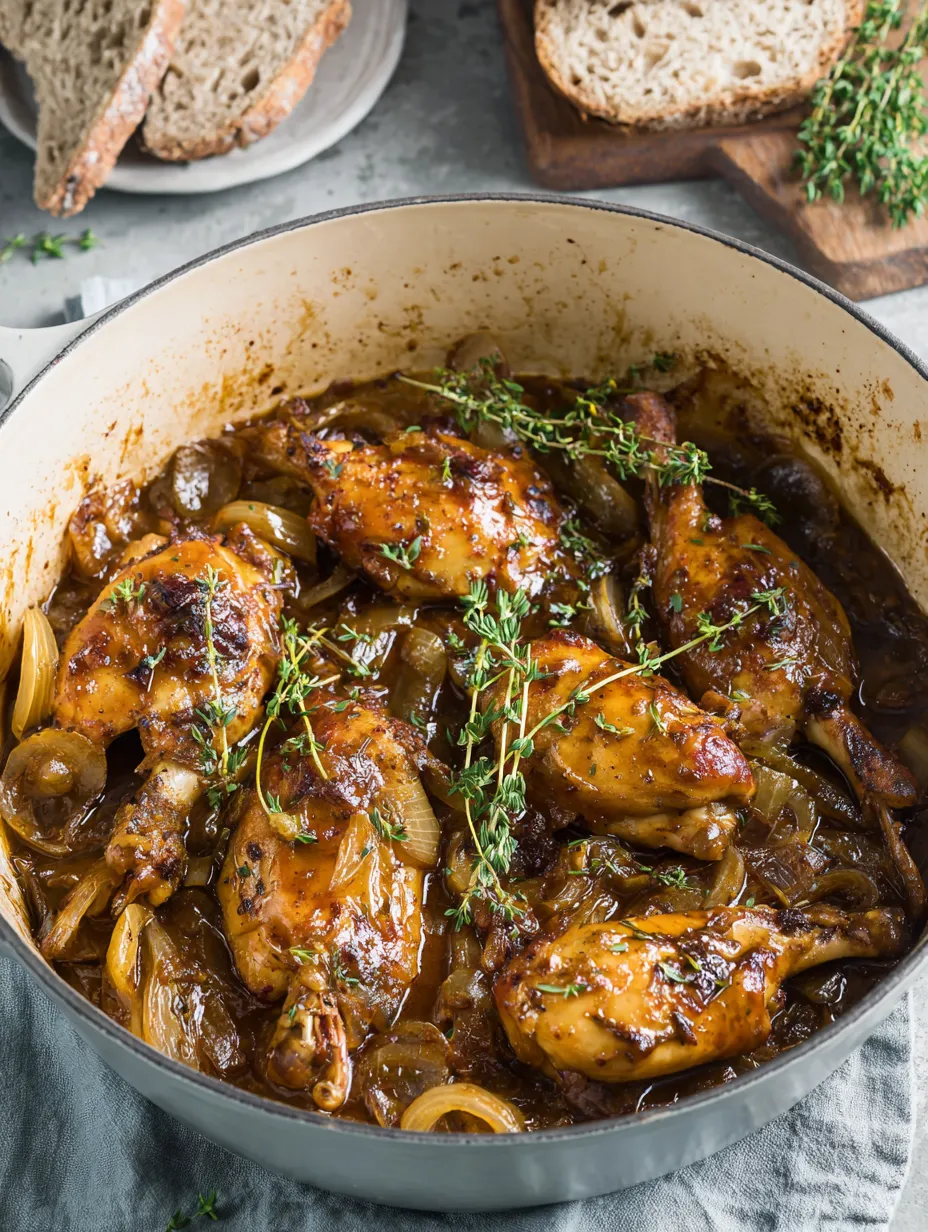 Pin
Pin
When you crave a cozy dish that celebrates bold flavors and hearty tradition, this Belgian rabbit stew with prunes and dark abbey ale really delivers. The slow simmer lets the rabbit become perfectly tender and melds its taste with smoky bacon and sweet dried fruit. If you are looking for a company-worthy meal suited for cold nights or family gatherings, this is the recipe to experience.
The first time I made this stew was for a special winter supper. The leftovers disappeared before I even finished putting them away. Now it is on regular rotation every year once the nights get chilly.
Ingredients
- Whole rabbit: Look for plump and pink fresh or frozen from a reputable butcher
- Flour: Helps thicken the sauce for that classic stew texture try unbleached all-purpose
- Ground black pepper and salt: These build essential base notes to season each bite
- Pitted prunes: Choose soft fresh prunes for maximum sweetness and gentle melt-in-mouth appeal
- Warm water: Hydrates the prunes and enriches the stew sauce later
- Butter: Adds richness and helps the rabbit brown evenly
- Olive oil: Compliments the butter and is great for high heat searing
- Thick-cut bacon: Select a smoky slab bacon cut look for good fat marbling
- Large onions: Try sweet yellow variety for the best mellow flavor once cooked down
- Dark abbey ale: The heart of this recipe pick a Belgian brew like Chimay for authenticity
- White wine vinegar: Brightens and balances out the richness
- Garlic: Use fresh cloves for the deepest aroma and taste
- Bay leaf and whole clove: Provide subtle herbal and spiced undertones
- Dried or fresh thyme: Dried is fine but if you have fresh it gives a cleaner more pronounced scent
Step-by-Step Instructions
- Prep the Prunes and Aromatics:
- Soak the prunes in warm water until they become plump and soft set aside for later. Roughly chop the thick-cut bacon into bite size pieces. Peel and chop the onions into thick slices. Make a bouquet garni by tying together the bay leaf clove and thyme so you can remove them easily later.
- Dredge the Rabbit:
- Mix the flour with salt and black pepper well in a broad shallow dish. Coat each rabbit piece on all sides in this flour mixture and shake off any extra. Save remaining seasoned flour for the next stages.
- Brown the Rabbit:
- Heat a Dutch oven or a thick bottomed stew pot over medium high. Melt the butter together with olive oil. When hot and shimmering lay in the rabbit pieces without crowding them. Let cook until golden on both sides turning gently so each bit gets flavor from browning. Set the browned rabbit aside on a plate.
- Render the Bacon and Sauté the Onions:
- Reduce the heat to medium. Drop the chopped bacon into the same pot. Stir while the bacon sizzles until most of the fat is rendered out and bacon is just crisping. Scoop out the bacon to drain and set aside. Into the leftover fat add the onions. Stir often and let them soften and turn translucent this makes the stew aromatic.
- Combine Ingredients and Build the Sauce:
- Return the rabbit to the pot with the onions. Sprinkle any leftover seasoned flour over the top and stir well for a minute or two. Pour in the dark abbey ale slowly about a quarter cup at a time stirring in between additions. This helps the flour thicken the sauce evenly and brings all the flavor together.
- Simmer the Stew:
- Once all the ale is added and the sauce is smooth tuck in the bouquet garni. Add the minced garlic and white wine vinegar. Put the lid on and set to simmer gently over low or medium low for an hour so the rabbit tenderizes and the flavors unite.
- Add Prunes Bacon and Finish Cooking:
- After an hour open the pot and pour in the soaked prunes and all the soaking water. Stir in the reserved bacon. Check the stew and if it looks dry add a little stock or water. Put the lid back on and keep simmering for thirty to fifty minutes. The rabbit should be very tender and prunes almost melting into the sauce.
- Final Touch and Serve:
- Remove the bouquet garni. Taste and adjust seasoning if necessary. Garnish with a little fresh thyme if you like. Serve hot right from the pot with crusty bread or steamed potatoes.
 Pin
Pin
This stew reminds me of brisk autumn evenings when we gathered around the table as the scent of thyme drifted through the house. The prunes became my secret touch my father always asked for a few extra in his bowl.
Storage Tips
This stew keeps beautifully. Once cooled transfer leftovers and sauce to a lidded container and refrigerate. It will taste even richer after a day and is good for up to three days in the fridge. Reheat slowly on the stovetop so the rabbit does not dry out.
Ingredient Substitutions
If you cannot find rabbit dark meat chicken thighs work nicely though the taste will change. Swap dark abbey ale with another Belgian dark style or a brown ale if you need to. Dried cherries or apricots could be used in place of prunes in a pinch though prunes are traditional for their velvety sweetness.
Serving Suggestions
I love serving this stew with toasted rustic bread to mop up every drop of sauce. A side of creamy mashed potatoes or a fresh green salad will round out the meal. For a real Belgian experience pour a glass of the same dark ale into your favorite mug.
 Pin
Pin
Cultural Context
Rabbit stew with ale and prunes is a beloved specialty in Belgium. Traditional abbey ales have been brewed by monks for centuries and are known for their complexity. In rural kitchens prunes add both sweetness and tender texture making this dish both economical and festive for special occasions.
Recipe FAQs
- → What type of ale is best for this dish?
A dark abbey ale, such as Chimay Première or a similar Belgian-style dubbel, brings deep, malty flavor and subtle sweetness, complementing both the rabbit and prunes.
- → Can I substitute another meat for rabbit?
Yes, chicken thighs or guinea fowl are good alternatives, as both hold up well to slow braising and develop rich flavor profiles with the same ingredients.
- → Why are prunes added to the stew?
Prunes provide gentle natural sweetness and help balance the savory, slightly bitter notes from the ale, rounding out the dish and deepening the sauce.
- → Should I use fresh or dried thyme?
Either fresh or dried thyme works well; fresh offers brighter aroma, while dried provides a subtler, earthy note. Add a sprig for garnish if using fresh thyme.
- → What should I serve alongside this stew?
Rustic bread, mashed potatoes, or buttery noodles pair perfectly to soak up the hearty sauce. Serve with a side of Belgian-style salad or roasted vegetables.
- → How do I know when the rabbit is done?
The meat should be very tender, easily pulling away from the bone after simmering. Check after about 90 minutes and continue until desired tenderness is reached.
Rabbit Prunes Dark Abbey Ale
Tender rabbit, prunes, and bacon simmered in dark abbey ale for a rich, comforting Belgian-style meal.
What You’ll Need to Make This
→ Main Ingredients
→ Coating & Seasoning
→ Liquid & Fat
→ Aromatics & Herbs
How to Prepare
Place pitted prunes in a bowl with the warm water and set aside to soften. Roughly chop the bacon and onions.
Wrap the bay leaf, clove, and thyme in a piece of kitchen twine or cheesecloth to create a bouquet garni.
Mix flour with salt and pepper in a shallow dish. Dredge the rabbit pieces in the mixture, shaking off any excess flour. Reserve extra flour.
Heat Dutch oven over medium-high heat. Add butter and olive oil, then sear rabbit pieces in batches until each side is golden brown. Set browned rabbit aside.
Lower heat to medium. Add chopped bacon and cook until most fat is rendered. Remove bacon to a plate lined with kitchen paper. Sauté onions in remaining bacon fat until translucent.
Return rabbit pieces to the pot. Sprinkle reserved flour over mixture and stir to coat. Cook for 2 minutes to remove raw flour taste.
Gradually pour in dark abbey ale in increments, about 60 ml at a time, stirring after each addition until sauce thickens and all ale is incorporated.
Bring to a gentle boil. Add minced garlic, white wine vinegar, and bouquet garni. Cover, reduce heat to low or medium-low, and let simmer for 60 minutes.
Add soaked prunes along with their soaking liquid and the cooked bacon. Stir and cover. Simmer gently on low to medium-low for 30–50 minutes until the rabbit is very tender.
Remove bouquet garni. Garnish with fresh thyme if desired and serve hot.
Extra Tips
- If more sauce is desired, add extra ale or substitute chicken or vegetable stock.
- Add a splash of stock if liquids reduce too quickly during simmering.
Tools Required
- Dutch oven or heavy-bottomed stew pot
- Kitchen twine or cheesecloth
- Sharp chef’s knife
- Cutting board
Allergen Info
Review ingredients carefully for allergens. Reach out to your healthcare provider if you’ve got specific concerns.
- Contains gluten (flour, ale)
Nutritional Information (Per Serving)
Remember, this info is purely for reference and isn’t meant to replace dietary guidance.
- Caloric Value: 420
- Fat Content: 19 grams
- Carbohydrate Content: 39 grams
- Protein Content: 17 grams
